Kelly was born in Dungannon, Northern Ireland. He studied Fine Art Painting (MA), University of Ulster, Belfast and then at the Staatliche Kunstakademie, Dusseldorf, (Prof. Konrad Klapheck) and at the Hochschule der Kunste, Berlin, (Prof. K.H.Hodicke).
He has presented 16 solo shows with the more recent this one in Cube Gallery (Within, May 2019) and has participated in many group exhibitions and art projects especially in Europe. His paintings can be viewed in private collections. He lives and works in Brussels.
by Liana Zoza
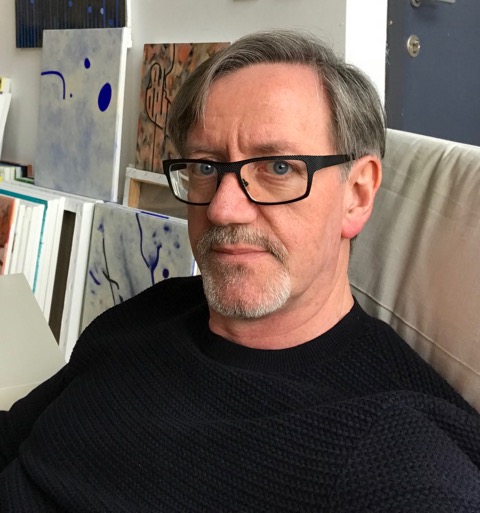
– When someone reads your bio, they can see that you were born in Northern Ireland; a country not only with an important tradition but also an eventful contemporary history! Has this played an important role concerning your choice to study painting and Fine Arts in Belfast? And in what way has this affected your later work?
-I was born in Northern Ireland, was educated and passed my formative years there. Undoubtedly one’s early experiences are influential and all the more so if the social situation is one of violent religious and nationalistic conflict.
I studied at Belfast as it was the only art college available to me at that time. Though I enjoyed my years there, I eventually became frustrated with the limited artistic possibilities in Ireland and wished to explore new areas.
– You continued with your studies in visual arts, in Düsseldorf and Berlin. Now you are living and working in Brussels and, at the same time, you’re traveling around the world collecting pictures and stimulations. Would you consider yourself a citizen of the world?
-I left Northern Ireland when I was twenty-five years old, therefore I have lived most of my adult life outside of Ireland. I consider myself very much European.
Where we are born is a matter of chance and has little to do with the individual, hence I feel very strongly that nationalism and patriotic fever are quite absurd. Yet unfortunately, in mischievous hands, they can be very divisive energies and the source of much evil.
I was very keen to incorporate Greek elements when planning this exhibition
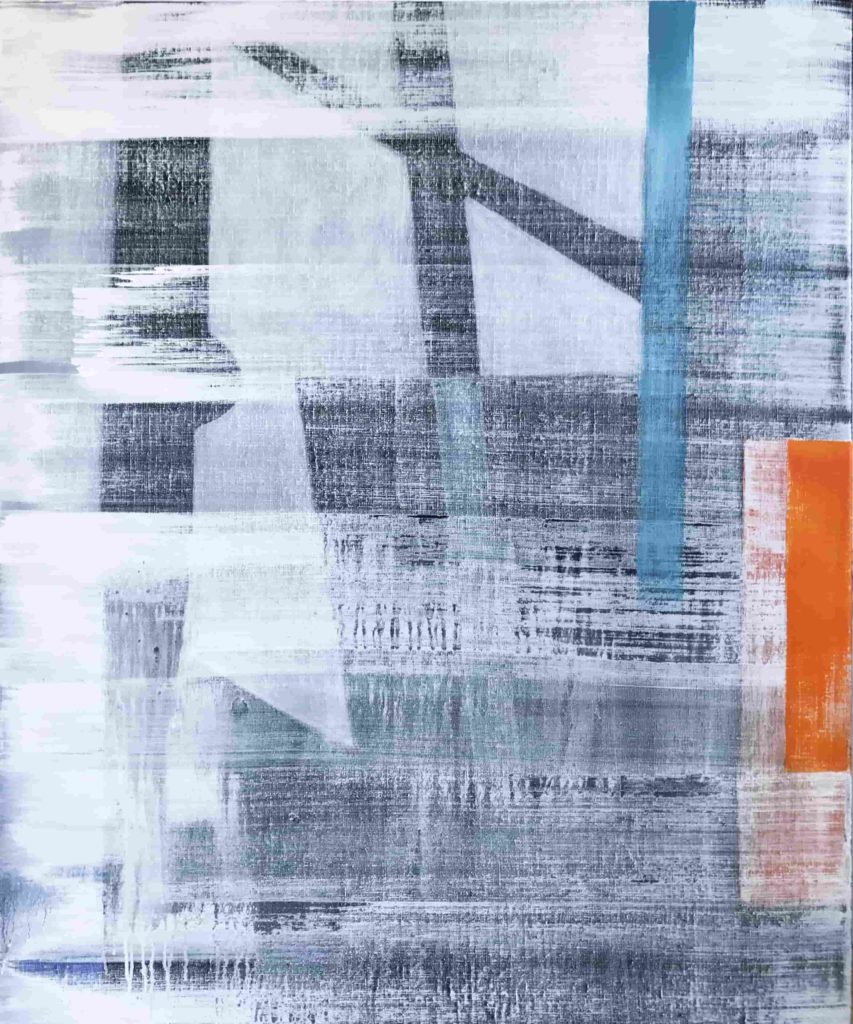
– The title of your solo show which you recently realized in Cube Gallery, is “Within”. Monolectic and straightforward, but at the same time it has the ability to invite and challenge the viewer to an interactive art game. Do you agree with this?
-The title of an exhibition can orientate the viewer as to the inspiration concerns of the artist. Likewise, for the artist, a title can encapsulate and focus different strands of thought. In this exhibition, I chose Within as my title for several reasons: It is an ‘open’ title in that it allows for several interpretations. I prefer to be poetic with my titles rather than descriptive.
‘Within’ refers to the physical layering on the paintings –some have text which is partly visible, others have signs and symbols which serve to capture the viewer’s attention and invite them to pause and reflect on what may lie beneath the painted surface.
– What caught my interest, among other things, were the ‘’hidden’’ codes of another civilization, the Greek one, which you seemed to have treated with love and respect, using your own art codes on the artworks of “Within”. How difficult was for you to connect visually the ancient standards with contemporary painting?
-I was very keen to incorporate Greek elements when planning this exhibition. However, given the immense cultural legacy in Greece, I chose to select elements that linked to my own visual language and concerns.
For example, the architectural brilliance of the Parthenon, a product of mathematical and engineering genius, it is underpinned with a magical dance of numbers and formulae.
Likewise, classical Greek canons of beauty referenced harmony in mathematical proportion. Our knowledge of the construction techniques employed, like much of classical Greek buildings and sculptures, lies in fragments.
In the ‘Alpha’ works, my use of geometry with numbers and ciphers was inspired by the hidden language of numbers. Other works have Greek words partly obscured by skeins of paint similar to sculptural fragments discovered by archaeologists and others that have lain for many centuries partly covered by the dust of time.
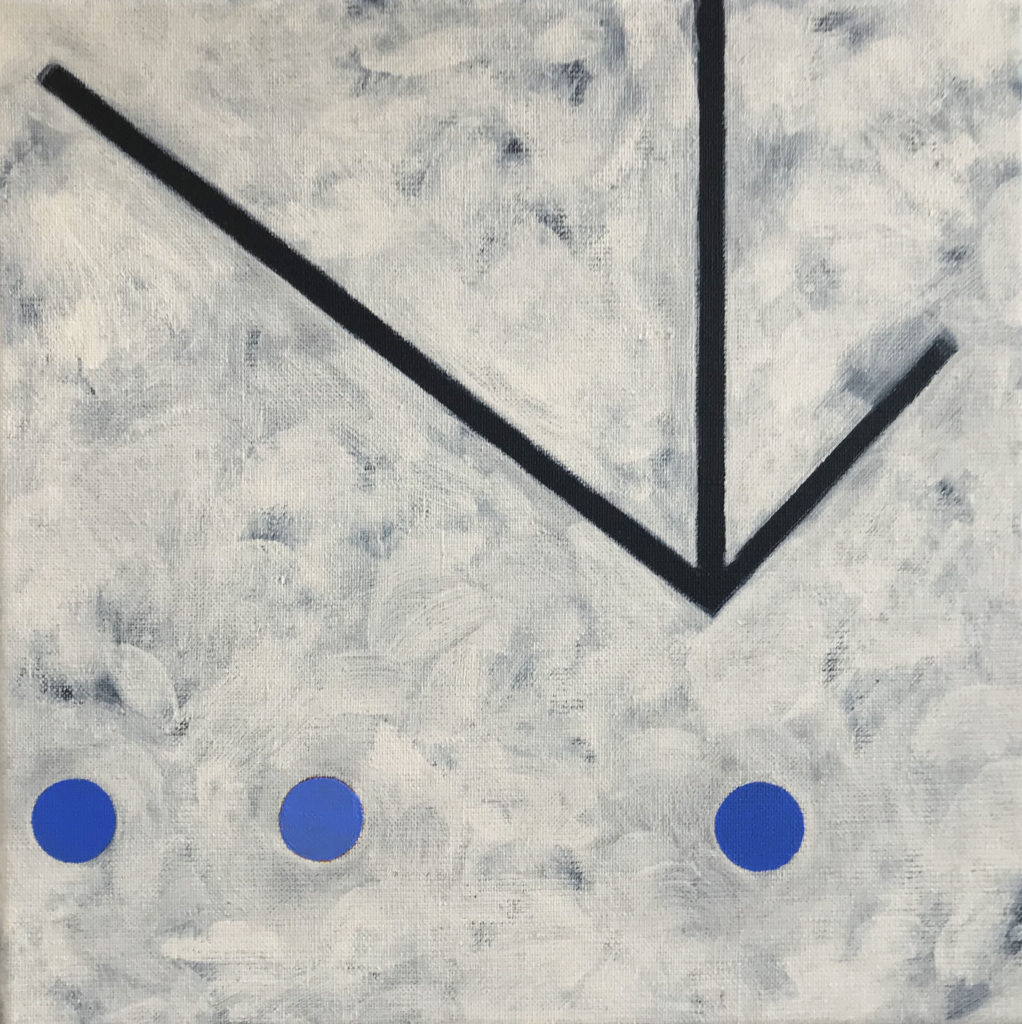
ALPHA 10, acrylic on canvas, 30 x 30cm 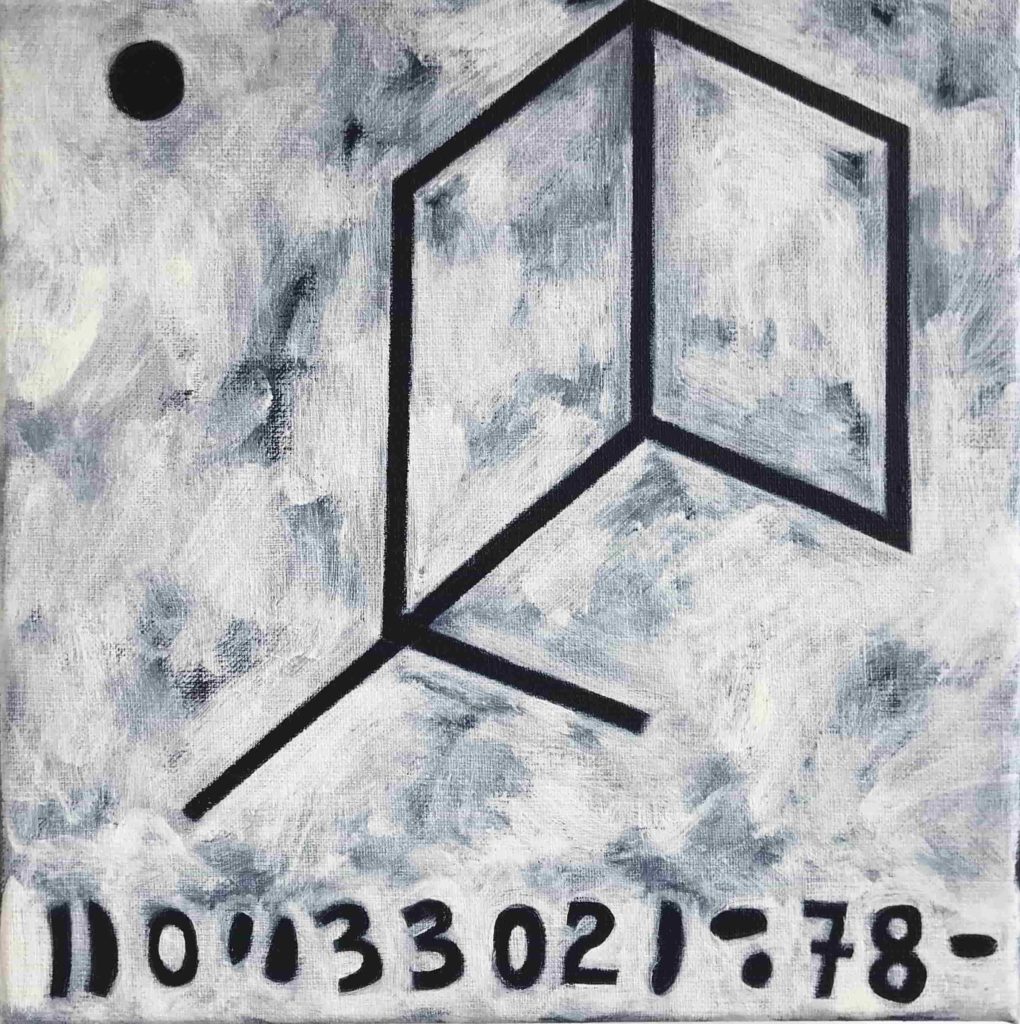
ALPHA 4, acrylic on canvas, 30 x 30cm
All Art in a way, and painting in particular, is a process of revealing by concealing
– Painting plays a significant role in your work, while you are using forms and colors in a way which is technically complete. Watching your career until now, I realized that you have the ability to create bright and strong visuals on the one hand and on the other hand visuals that walk the line of the immaterial! Desire or need for exploration?
-I must say I am an unabashed lover of paint! I have tried other media during my not so few years as an artist yet the possibilities for paint never fail to intrigue and inspire me.
The art world incessantly announces that painting is dead. However, after its revival in the 1980s, painters have never ceased to surprise with important works demonstrating the unique qualities of the medium.

I have always stuck to paint using both oil and acrylic. Perhaps by having a few variables I seek to optimize the grasp of my chosen language of brush, color, and paint. Within these parameters I like to operate, always trying to capture the essence and refine my expression. Hence, I would say I continuously experiment and see my journey as just beginning.
– I’d like to stay in the unity of the works you created under the title “Haysheds”. Personally, I had the chance to hear an amazing and interesting story about the origins of this work. Would you like to share this with our readers?
The Hayshed paintings are part of a series of 40+ small paintings which I am just completing, called ‘Forty Shades of Green’. The motif in all the works is a Hayshed which is a corrugated iron structure, used by farmers in Ireland to store Hay for feeding cattle during the winter.
I was born and raised in Northern Ireland and my summers were spent on my uncle’s farm where I played in such buildings. They represent a special part of my childhood – long summer days playing with my cousins, the sweet smell of hay with sunshine filtering through the warm dust.
Even today they remain a very visible physical structure in the countryside; often they are painted green or more often with red lead, which stands out visually against the myriad greens of the Irish landscape.
Inevitably there is a conflict between a symbol of my childhood memories pre-troubles, and that which it became
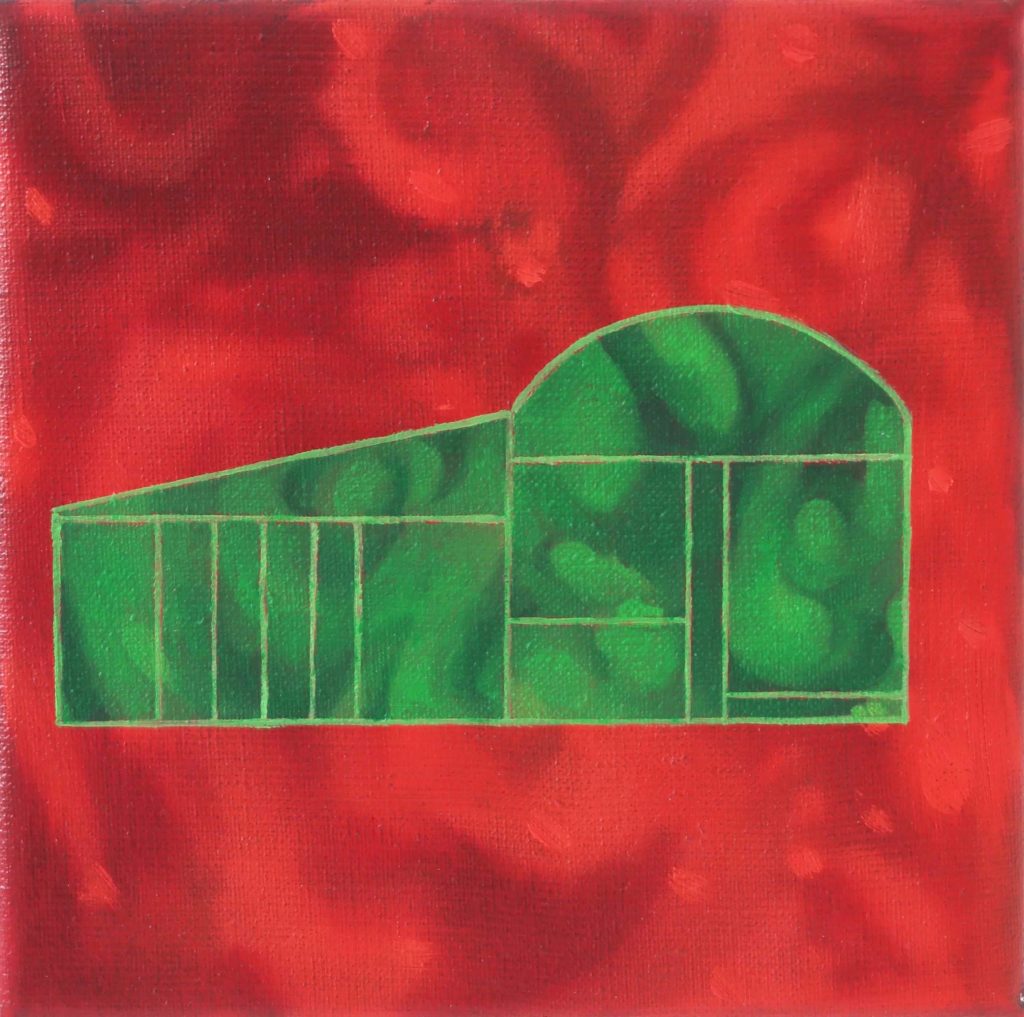
This is the more visual and perhaps poetic or romantic side of the work. However, there is a more sinister aspect also. During the many years of the Troubles in N.Ireland, these haysheds were used by the IRA to hide guns and explosives.
They often booby-trapped the doors to kill or injure policemen or British soldiers when they came to search for hidden explosives. Likewise, undercover soldiers would find weapons then wait in hiding for the IRA members to appear and then kill them. The Haysheds became places of danger, menace, and sudden death.
Inevitably there is a conflict between a symbol of my childhood memories pre-troubles, and that which it became. The title ‘Forty Shades of Green’ is from a Johnny Cash song – a very sentimental, maudlin song about Ireland. A romantic, idealized view which ignores the hidden divisions in that country.
The forty shades of green is an oft-repeated saying when talking about the beauty of Ireland and there are indeed many shades of green. Shades is also understood and pronounced as Sheds in our local dialect.
My intention was to use red/green complementary color combinations to create the series as forty paintings made from twenty pairs – each pair being red/green variations. Red and Green being the dominant colors used to paint Haysheds in reality.
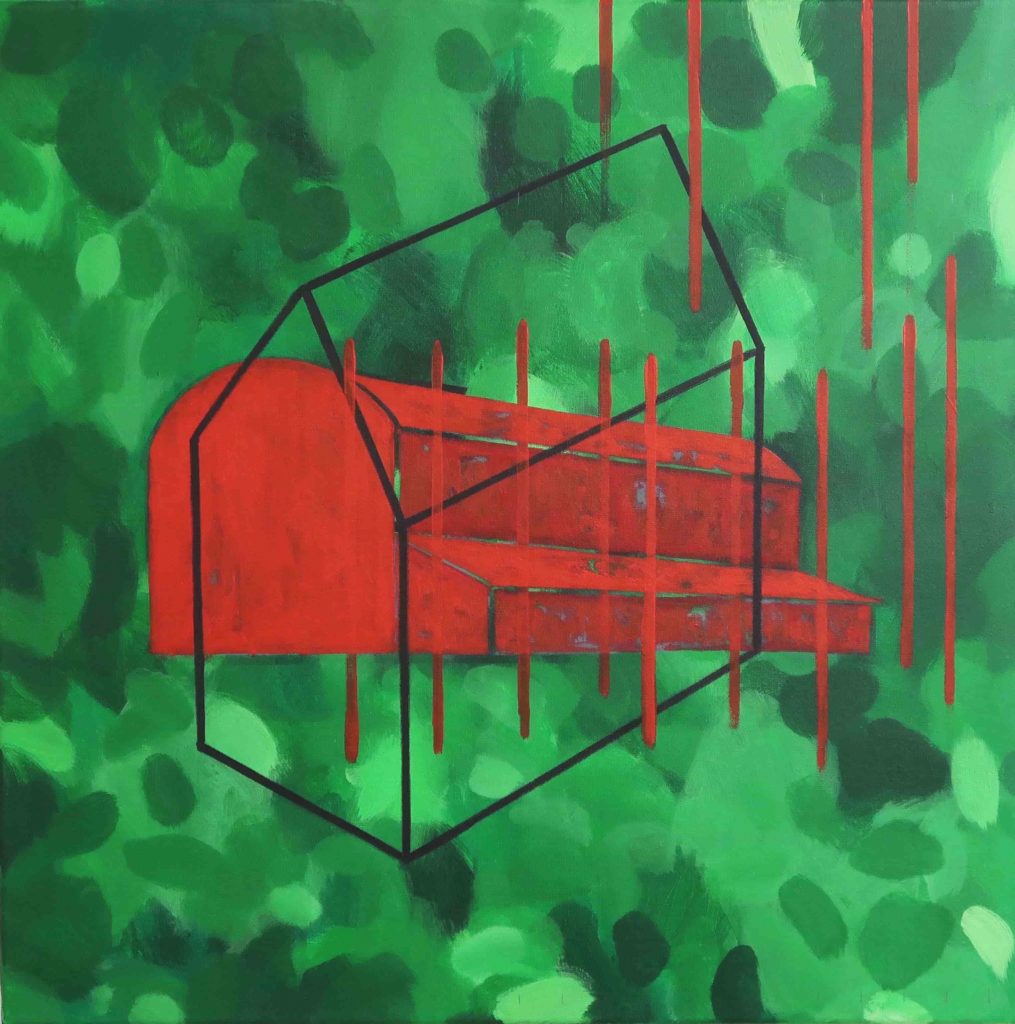
In conclusion I would say that as in all conflicts of this type, the ‘truth’ is the first victim and in retelling events we encounter multiple variations of a truth –forty shades of truth and lies.
– Bearing a big journey until today in the world of contemporary art and living in a country which symbolizes United Europe, I think it would be interesting to hear your opinion regarding the art’s and artist’s position in a Europe composed of countries which characterize “differences” not only in daily life but also in cultural perception.
-I am a firm believer that art does not belong to any one country. We are very fortunate in our Europe that many restrictions on living and working in other countries have been lifted. All of Europe is open and available. Brussels, in particular, has a very active gallery and cultural scene and given the enormous mix of peoples, in what is a relatively small city, it feels more like a cosmopolitan hub.
Of course, having world-renowned galleries on one’s doorstep is a great privilege, enabling direct access to contemporary art of all types.
– I know that painting for you, and art in general, is a way of living and I am sure there are artists you love and maybe you have been inspired by their work. Would you like to mention some of them?
-My taste in art and artists is very broad. Perhaps my greatest inspiration has always been Da Vinci. He personifies my belief that art transcends boundaries and is not limited to creating beautiful objects – an artist is, in fact, a being who reacts to events in the world around them, who are able to filter experience and somehow extract an essential essence ‘art’, which others recognize and can breathe easy in its presence.
Within contemporary art I would cite Joseph Beuys as being a key influence and Anselm Kiefer, Cy Twombly to name but two. In general, I admire artists whose work ‘moves’ me, in ways that combine poetry and technical skill. Often their process is more akin to a scientist who has a theory and sets about investigating the natural world in the hope of revealing a poetic truth.
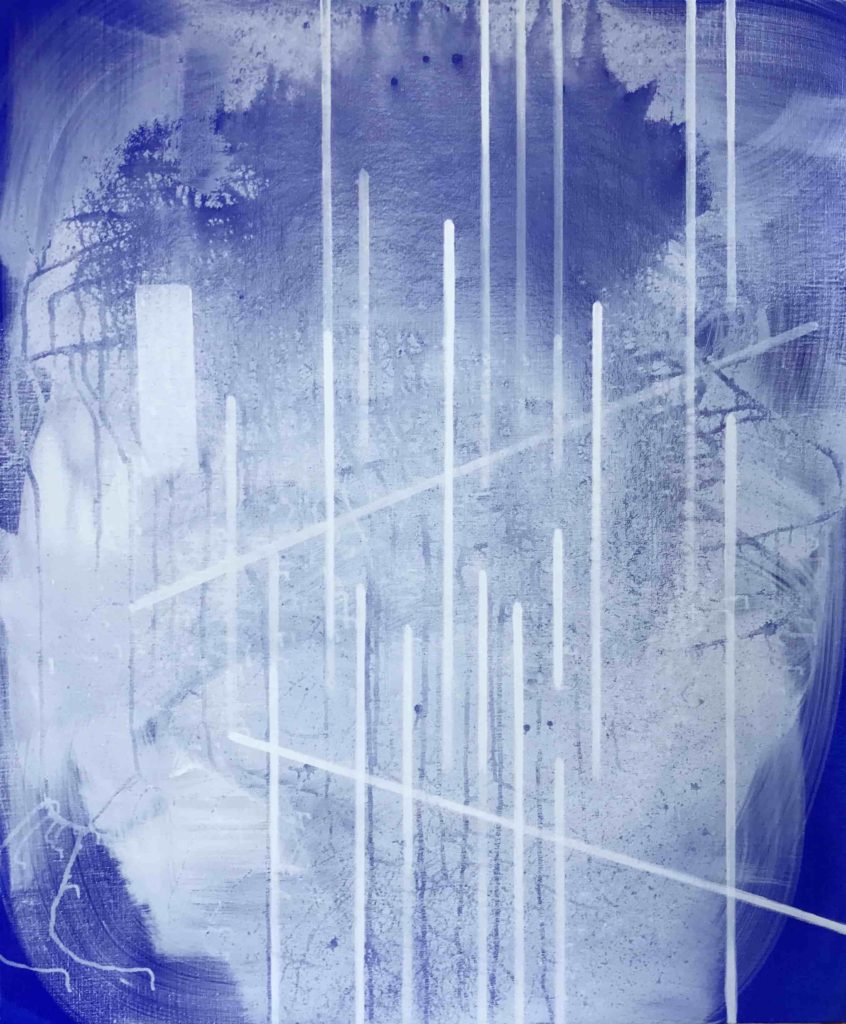
– Your work is distinguished by consistency and continuity and I believe you are preparing new things. So, what is it that we are waiting to see from you not only in the foreseeable future but also in the longer term?
-As I mentioned earlier, I tend to work in series, akin to how I record my daily experiences and thoughts in moleskin notebooks. Each work being but a fragment of a greater whole. I have always thought it odd to presume a single work of art can cover the infinite possibilities of any given moment in space and time.
This recording of fleeting impressions is a constant in many of my artistic concerns as are these events were seen in the natural world – sunrise, sunset, seasons and light changes, colors and textures which fade and become more accused with the passage of time.
Painting and indeed all art is a philosophical choice on how to live your life – to step aside from every man work experiences – a leap into the unknown with a parachute of trust that your calling is to reveal the beauty and mystery of life in every day and the ordinary.
Some of my present works are almost certainly inspired by recent travels in Greece, in particular, my recollection of its seas and luminosity.

A constant in my work is a desire to evoke a sense of place, not overtly, but rather through hints or fragments of not only a ‘place’ but also all that informs and gives this place character or identity, including its historical and poetic context. In my compositions, I may include fragments of historical artifacts, buildings, corners and shots of pure color.
Furthermore, within my practical painting process, I am intrigued by the visual effect of mixing washes of color and semi-transparent white glazes. This way of working references the fluidity and movement of water. It is a medium which has always fascinated me as in lakes or rivers or sea, in particular, the Mediterranean Sea.
These recent works have a lot of references to water, not only its transformative qualities but also as a metaphor for time past and present, the same but ever-changing.

Paintings by Brendan Kelly 
Paintings by Brendan Kelly



